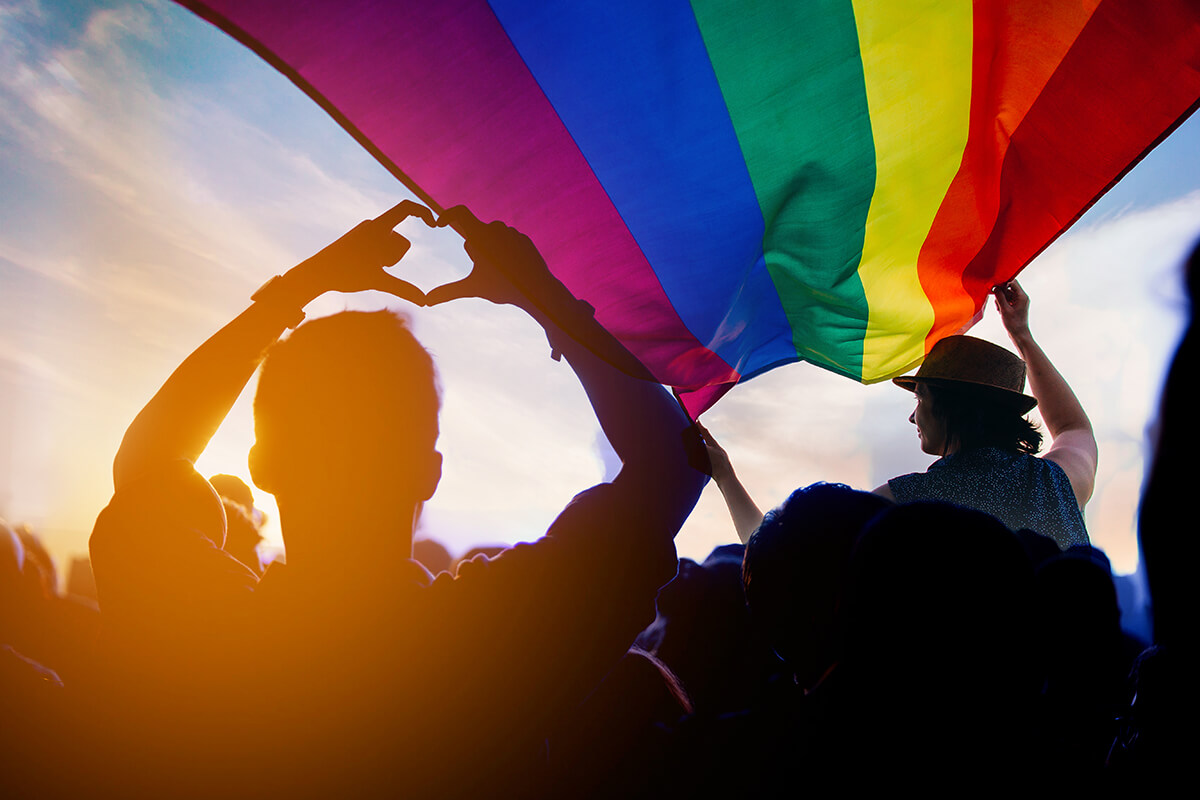The language we use to define gender and sexuality is constantly evolving. As marketing and communications professionals strive to better represent the communities they serve, using the right words and phrases are essential. And sometimes, that is easier said than done.
Whether you’re looking to update language for your content or simply your lexicon, these definitions can help get you started.
Common Phrases
LGBTQ
An umbrella acronym for the Lesbian, Gay, Bisexual, Transgender and Queer or Questioning community. The acronym has expanded over time to better reflect the diversity of its community. LGBTQIA for instance, includes representation for Intersex individuals, Asexual individuals and Allies. At times, these acronyms will also include a plus (+) sign at the end to denote identities not included, such as demisexual or pansexual.
While the prevailing use of the acronym continues to evolve, the LGBTQ acronym and iterations like it are a better overarching term to use than “the gay community,” as the term “gay” only covers a select portion of the community. Unless your communications are directed to a specific category of people, it is best to use overarching language like LGBTQ+ or LGBTQIA+.
Gay
The commonly accepted term for an individual who is attracted romantically, erotically, and/or emotionally to other individuals of the same sex. The term is commonly used to describe men who are attracted to other men but is sometimes used to identify women who are attracted to other women.
Straight
An adjective used to describe someone who is solely attracted to individuals of the opposite sex. The term is used interchangeably with “heterosexual.”
Lesbian
The commonly accepted term for a woman who is attracted romantically, erotically, and/or emotionally to other women.
Gender Binary
“Gender binary” or “gender binarism” is the classification of gender into two distinct, opposite identities characterized by feminine vs. masculine characteristics. Many members of the LGBTQIA+ community reject the idea of a gender binary and consider gender itself to be a social construct. Individuals who identify outside the binary labels of “man” and “woman” may identify as “nonbinary.”
Bisexual
An individual who is attracted to some people of the same and opposite gender. Bisexual attraction is not necessarily equally split between genders, and some bisexual individuals may be more attracted to men or women. There is ongoing debate among the LGBTQIA+ community about whether the term “bisexual” directly perpetuates gender binarism.
Pansexual
Comparable to bisexuality, “pansexuality” is the attraction towards other individuals regardless of their gender or biological sex. Pansexuality directly rejects the idea of a gender binary.
Transgender
An umbrella term for an individual whose gender identity is different from the sex they were assigned at birth. An individual does not have to have undergone a transition or medical procedure to identify as a transgender person.
Cisgender
An umbrella term used to describe people whose gender identity matches the sex they were assigned at birth. For example, an individual whose biological sex is male and identifies as male is considered cisgender.
Gender Pronouns
The set of pronouns used in identifying a person that reflects their gender identity. Common binary gender pronouns are “he/she” and “her/his.” Some individuals prefer to use gender neutral pronouns like “they/them.” In recent years, the Associated Press has recognized the use of “they/them” pronouns to refer to a single individual.
A best practice for fostering an environment of inclusion is to proactively communicate your pronouns upon first meeting, even if you identify as cisgender. This can be done at the start of an introductory meeting, in your professional bio or even your email signature. By establishing this practice as the norm, it takes away the assumptive nature of pronoun use and normalizes the process for individuals who may identify as transgender.
Sexual Orientation
The pattern of an enduring romantic or sexual attraction to members of the same and/or opposite sex.
Phrases to Avoid
Queer
An umbrella term used to refer to someone who isn’t straight and/or cisgender. Given that some still consider queer to be a pejorative term (it originated as a slur), communicators and journalists should avoid using it unless referencing an individual who explicitly states they’d prefer to be identified as such.
Homosexual
This term originated in medical terminology, often in the context of classifying same sex attraction as mental illness. For this reason, the term carries a negative connotation in the LGBTQIA+ community and should be avoided whenever possible.
Sexual Preference
While this term might seem harmless on its own, using it interchangeably with sexual orientation suggests that being gay, lesbian or bisexual is a choice and therefore “curable.” Instead, consider using “sexual orientation.”
Just as our society’s dialogue around gender and sexual orientation is evolving, so too are the words we use to guide the conversation. This is not an exhaustive glossary of terms and is merely a screenshot of the overarching, generally accepted terms used at this time of writing. It is our responsibility as professional communicators to keep a pulse on the conversation as it continues, expand on our research and be prepared to adjust accordingly.
After all, building connection with your audience isn’t just about how well you speak, but how well you listen.








